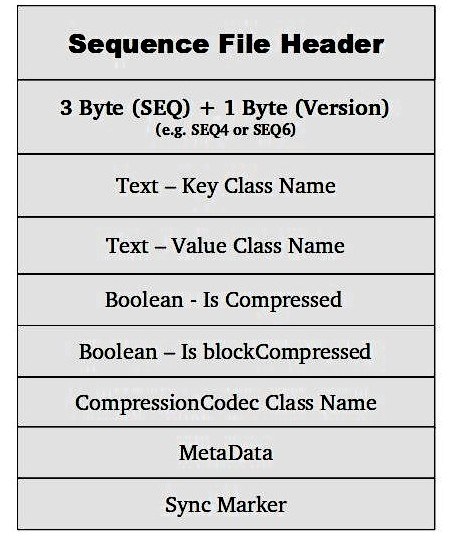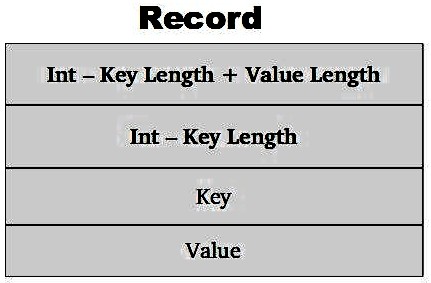Mapper
The map function in Mapper reads row by row of Input File
Combiner
The Combiner wont be called when the call to the Reducer class is not there in Driver class.
Reducer
The Reducer and Combiner need not do the same thing as in case of average of 0 to 100 Numbers.
Input to Mapper
1/1/09 1:26,Product2,1200,Nikki,United States
1/1/09 1:51,Product2,1200,Si,Denmark
1/1/09 10:06,Product2,3600,Irene,Germany
1/1/09 11:05,Product2,1200,Janis,Ireland
1/1/09 12:19,Product2,1200,Marlene,United States
1/1/09 12:20,Product2,3600,seemab,Malta
1/1/09 12:25,Product2,3600,Anne-line,Switzerland
1/1/09 12:42,Product1,1200,ashton,United Kingdom
1/1/09 14:19,Product2,1200,Gabriel,Canada
1/1/09 14:22,Product1,1200,Liban,Norway
1/1/09 16:00,Product2,1200,Toni,United Kingdom
1/1/09 16:44,Product2,1200,Julie,United States
1/1/09 18:32,Product1,1200,Andrea,United States
Output of Mapper
Key = Product Date {2009-01} Product Name {Product2}
Value = Product Price {1200} Product No {1}
----------------------------
Key = Product Date {2009-01} Product Name {Product2}
Value = Product Price {1200} Product No {1}
----------------------------
Key = Product Date {2009-01} Product Name {Product2}
Value = Product Price {3600} Product No {1}
----------------------------
Key = Product Date {2009-01} Product Name {Product2}
Value = Product Price {1200} Product No {1}
----------------------------
Key = Product Date {2009-01} Product Name {Product2}
Value = Product Price {1200} Product No {1}
----------------------------
Key = Product Date {2009-01} Product Name {Product2}
Value = Product Price {3600} Product No {1}
----------------------------
Key = Product Date {2009-01} Product Name {Product2}
Value = Product Price {3600} Product No {1}
----------------------------
Key = Product Date {2009-01} Product Name {Product1}
Value = Product Price {1200} Product No {1}
----------------------------
Key = Product Date {2009-01} Product Name {Product2}
Value = Product Price {1200} Product No {1}
----------------------------
Key = Product Date {2009-01} Product Name {Product1}
Value = Product Price {1200} Product No {1}
----------------------------
Key = Product Date {2009-01} Product Name {Product2}
Value = Product Price {1200} Product No {1}
----------------------------
Key = Product Date {2009-01} Product Name {Product2}
Value = Product Price {1200} Product No {1}
----------------------------
Key = Product Date {2009-01} Product Name {Product1}
Value = Product Price {1200} Product No {1}
----------------------------
Magic of Framework happens Here
Input of Combiner
----------------------------
Key = Product Name {2009-01} Product No {Product1}
Values
Product Price 1200
Product No 1
Product Price 1200
Product No 1
Product Price 1200
Product No 1
----------------------------
Key = Product Name {2009-01} Product No {Product2}
Values
Product Price 1200
Product No 1
Product Price 1200
Product No 1
Product Price 3600
Product No 1
Product Price 1200
Product No 1
Product Price 1200
Product No 1
Product Price 3600
Product No 1
Product Price 1200
Product No 1
Product Price 1200
Product No 1
Product Price 1200
Product No 1
Product Price 3600
Product No 1
----------------------------
Values added together in Combiner based on Key
key 2009-01 Product1
productPrice 1200
productNos 1
----------------------------
productPrice 2400
productNos 2
----------------------------
productPrice 3600
productNos 3
----------------------------
key 2009-01 Product2
productPrice 1200
productNos 1
----------------------------
productPrice 2400
productNos 2
----------------------------
productPrice 6000
productNos 3
----------------------------
productPrice 7200
productNos 4
----------------------------
productPrice 8400
productNos 5
----------------------------
productPrice 12000
productNos 6
----------------------------
productPrice 13200
productNos 7
----------------------------
productPrice 14400
productNos 8
----------------------------
productPrice 15600
productNos 9
----------------------------
productPrice 19200
productNos 10
----------------------------
Output of Combiner and Input to reducer
Key = Product Name {2009-01} Product No {Product1}
value = Product Price {3600} Product Nos {3}
----------------------------
key = Key = Product Name {2009-01} Product No {Product2}
Value = Product Price {19200} Product Nos {10}
Output of Reducer
Key = Product Name {2009-01} Product No {Product1}
Value = AvgVolume {1200} NoOfRecords {3}
----------------------------
Key = Product Name {2009-01} Product No {Product2}
Value = AvgVolume {1920} NoOfRecords {10}
----------------------------



